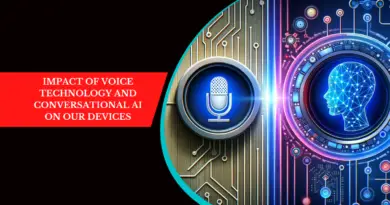Exploring the Potential of Generative AI: Revolutionizing Creativity and Innovation
Generative Artificial Intelligence (AI) has emerged as a groundbreaking technology that is redefining the boundaries of creativity and innovation. By enabling machines to generate new content, such as images, music, and text, generative AI is revolutionizing various industries, including art, design, music, and even medicine. In this blog post, we will delve into the world of generative AI, understanding its underlying principles, exploring its applications, and discussing the potential impact it can have on the future of human creativity.
What is Generative AI
Generative AI refers to the use of artificial intelligence algorithms to generate new content that is original and unique. Unlike traditional AI systems that are primarily focused on analyzing and interpreting existing data, generative AI goes beyond mere analysis and actively creates new content. This is made possible through various techniques, such as generative adversarial networks (GANs) and recurrent neural networks (RNNs), which enable machines to learn patterns and generate new content based on those patterns.

How does generative AI differ from other types of artificial intelligence?
Generative AI is a specific type of artificial intelligence that focuses on generating new content or data. Unlike other types of AI that are designed to perform specific tasks or solve well-defined problems, generative AI has the ability to create original and unique outputs.
One key difference between generative AI and other types of AI is its approach to problem-solving. While traditional AI systems rely on pre-programmed rules and algorithms to perform tasks, generative AI utilizes machine learning techniques such as deep learning. This allows the system to learn from vast amounts of data and generate outputs based on patterns it has identified.
Another distinction lies in the output generated by generative AI. Rather than providing a single solution or answer, generative AI can produce a variety of outputs that are creative and diverse. It has the capability to generate text, images, music, or even videos that have never been seen before.
Generative AI also requires large amounts of training data in order to effectively learn and generate meaningful outputs. By analyzing massive datasets, the system can identify patterns and relationships within the data which it then uses to create its own unique content.
Overall, generative AI stands apart from other types of artificial intelligence by its ability to produce original content through machine learning techniques and its capacity for creative output generation.
Applications of Generative AI
The applications of generative AI are vast and diverse. In the field of art and design, generative AI can create unique and visually stunning images, sculptures, and designs that push the boundaries of human creativity. This technology can also be harnessed for music composition, where AI algorithms can generate original melodies and harmonies, inspiring musicians and composers to explore new musical territories. Furthermore, generative AI has the potential to revolutionize the gaming industry by creating immersive and dynamic game worlds that adapt to players’ actions and preferences.
In the realm of medicine, generative AI can aid in drug discovery and development by generating new molecular structures and predicting their properties, potentially speeding up the process of finding new treatments. Additionally, generative AI has found applications in natural language processing, where it can generate coherent and contextually relevant text that mimics human writing styles, making it useful for content generation, chatbots, and language translation.
How does generative AI work in the field of art and creativity?
Generative AI has revolutionized the field of art and creativity by leveraging machine learning algorithms to generate new and unique artistic creations. This technology has opened up exciting possibilities for artists and creatives to explore and expand their artistic horizons.
Generative AI works by analyzing vast amounts of data, such as images or text, to learn patterns and styles. It then uses this knowledge to generate new content that aligns with the desired artistic style or creative intent. This process involves training the AI model on a dataset that captures various artistic elements like color palettes, brush strokes, composition techniques, or even specific artists’ styles.
Artists can use generative AI as a tool to enhance their creative process. They can input their ideas or preferences into the system and let it generate alternative versions or variations based on those inputs. This iterative process allows artists to explore different possibilities quickly and efficiently.
Moreover, generative AI can also be used collaboratively with human artists. It can serve as an inspiration source or a starting point for further artistic exploration. Artists can take generated outputs from the AI model and refine them according to their own unique vision and personal touch.
How can businesses leverage generative AI to enhance their products or services?
One key way that businesses can utilize generative AI is in the product development process. With generative AI algorithms, companies can generate and iterate through countless design options for their products. This allows them to explore a wide range of possibilities and identify unique solutions that may not have been considered otherwise. By harnessing the power of generative AI, businesses can streamline their product development process and bring more innovative offerings to market.
In addition to product development, generative AI can also be applied to enhance services offered by businesses. For example, in customer service applications, generative AI chatbots can provide personalized and efficient support to customers. These chatbots are capable of understanding natural language queries and generating accurate responses in real-time. By utilizing generative AI in customer service interactions, businesses can improve response times and provide a more satisfying experience for their customers.
Furthermore, generative AI can be used to create personalized recommendations for users based on their preferences and behaviors. This technology analyzes vast amounts of data to understand individual user patterns and generate tailored recommendations accordingly. Businesses across various industries such as e-commerce, entertainment streaming platforms, or even news websites can leverage this capability to deliver highly relevant content or product suggestions to their customers.
The Potential Impact of Generative AI
Generative AI has the potential to disrupt traditional creative industries by pushing the boundaries of human imagination and enabling the exploration of new creative frontiers. By providing artists, designers, and musicians with novel tools and inspiration, generative AI can foster a symbiotic relationship between human creativity and machine-generated content. This collaboration can lead to the creation of unique and innovative works that were previously unimagined.
Furthermore, generative AI can democratize access to creativity by providing tools and platforms that allow individuals with limited artistic skills to create compelling content. This can empower aspiring artists, designers, and musicians to express their ideas and bring their visions to life, regardless of their technical expertise.
However, the rise of generative AI also raises ethical considerations. As machines become more adept at generating content, the line between human and machine-generated works may blur. Questions surrounding attribution, copyright, and intellectual property rights will need to be addressed to ensure fair recognition and compensation for human creators.
What are the potential benefits and challenges of using generative AI?
Generative AI has the potential to revolutionize various industries by automating tasks that were once time-consuming and labor-intensive. This technology utilizes algorithms to generate new content, such as text, images, and even music. While there are numerous benefits associated with using generative AI, it also presents certain challenges that need to be addressed.
One of the key benefits of generative AI is its ability to enhance creativity and efficiency. By automating content generation processes, businesses can save valuable time and resources. For example, copywriters can use generative AI tools to quickly generate drafts or ideas for their writing projects. This allows them to focus on refining and adding their unique creative touch rather than starting from scratch.
Furthermore, generative AI can improve productivity by generating large volumes of content in a short period. This is particularly useful for industries that require a high output of creative work such as advertising agencies or content production companies.
However, along with these benefits come certain challenges that need careful consideration. One major challenge is ensuring the quality and originality of the generated content. While generative AI can produce impressive outputs, there is still a risk of plagiarism or producing low-quality content if not properly monitored or guided by human oversight.
Another challenge lies in striking the right balance between automation and human input. Generative AI should be seen as a tool to assist humans rather than replace them entirely. It is crucial for businesses to find ways to integrate this technology seamlessly into their workflows while preserving the human touch and expertise.
Conclusion
Generative AI has the potential to revolutionize the creative landscape by pushing the boundaries of human imagination and enabling the creation of novel and innovative works. From art and design to music composition and medicine, the applications of generative AI are vast and diverse. As this technology continues to evolve, it is crucial to strike a balance between human creativity and machine-generated content, ensuring that the ethical implications are carefully considered. By embracing the potential of generative AI, we can unlock new realms of creativity and innovation that were once unimaginable.



